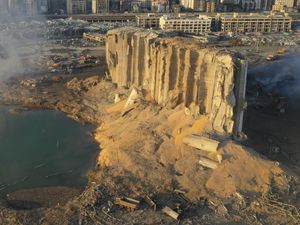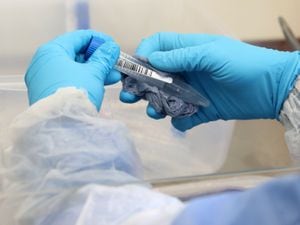Beirut explosion: What is ammonium nitrate and why is it deadly?
2,750 tonnes of ammonium nitrate was being stored in a warehouse.

The blast which killed at least 100 people and injured more than 4,000 others in the Lebanese capital, Beirut, is thought to have been caused by a chemical commonly used in fertilisers.
Lebanon President Michel Aoun said that 2,750 tonnes of ammonium nitrate being stored unsafely in a warehouse caused the explosion.
Here is all you need to know:
What is ammonium nitrate?
Ammonium nitrate is an industrial chemical used widely in fertilisers as it is a good source of nitrogen that help plants grow.
It is also one of the main ingredients in explosives used for mining, quarrying, and civil construction.
Ammonium nitrate is a an oxidiser, a type of chemical which helps fuel burn by drawing oxygen to it.
Trevor Lawrence, a senior lecturer and expert in explosives and munitions at Cranfield Ordnance Test and Evaluation Centre in Cranfield University, said: “Normally it needs the addition of a fuel to produce an explosive, but under some circumstances it can detonate.”
What makes this chemical dangerous?
Ammonium nitrate by itself is not regarded as volatile or dangerous, but it can be deadly under certain conditions.
If it gets contaminated, for example with fuel oil, it can become highly explosive.
Most countries have regulations controlling its storage to make sure it is safe.
Andrea Sella, a professor of inorganic chemistry at University College London, said: “This is a catastrophic regulatory failure because regulations on the storage of ammonium nitrate are typically very clear.”
What would have caused the explosion?

In certain circumstances, ammonium nitrate can turn from a stable compound into an explosive.
It can, for example, be set off by an initial fire which then causes the rest of the material to explode.
Although hard to ignite on its own, Dr Rory Hadden, Rushbrook senior lecturer in fire investigation at the University of Edinburgh, said ammonium nitrate can undergo a detonation if it is strongly heated in a confined space.
He said: “Once the compound is heated, it breaks down to release energy.
“This increases the temperature of the adjacent material which in turn increases the reaction rate.
“A feedback loop is established and the rate of the reaction continues to increase.”
Mr Sella described the blast as a possible “nitrate-based explosion”.
He said: “The orange plume above the explosion site is due to nitrogen dioxide, the toxic air pollution gas, and is a tell-tale sign of a nitrate-based explosion.”
Has this happened before?

There have been a few other cases of ammonium nitrate explosions.
Clifford Jones, visiting professor in chemical engineering at the University of Chester, said: “One of the best known was in Texas City in 1947, when there were more than 580 deaths.
“A much more recent one was at Waco, Texas, in 2013, when there were 15 deaths and 160 injuries.”
Other cases include in Oppau, Germany, in 1921, which resulted in more than 500 deaths, and Tianjin, China, in 2015, where a series of explosions involving ammonium nitrate and other chemicals killed 173 people.





